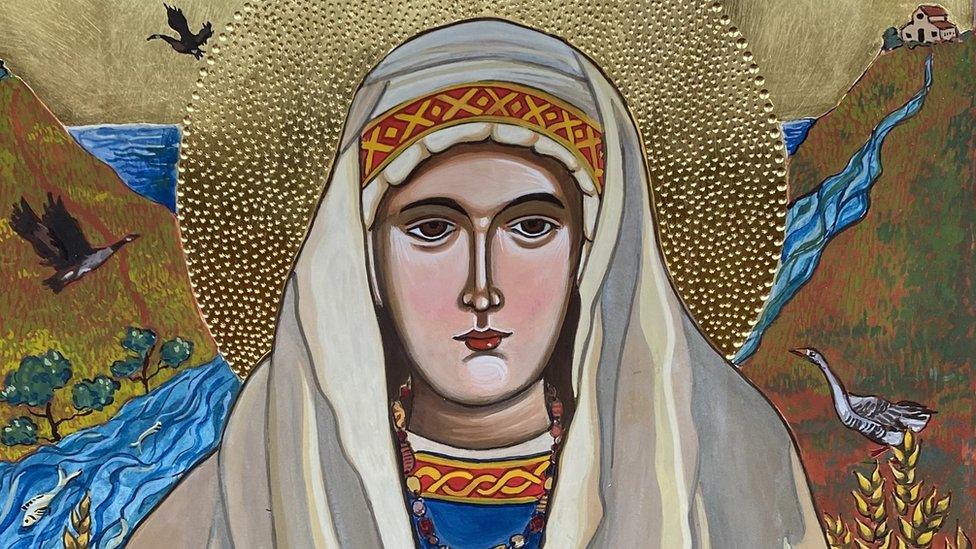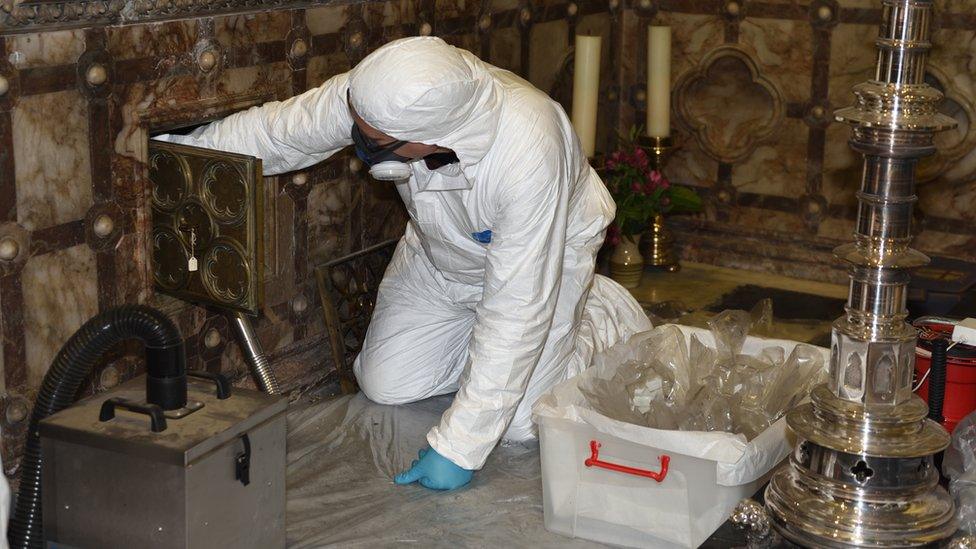St Eanswythe: Church of England seeking new home for bones of Anglo-Saxon saint
- Published

Eanswythe was a Kentish royal saint descended from Anglo-Saxon kings
The Church of England is seeking a new home for the remains of an Anglo-Saxon saint who was present at the start of Christianity in England.
St Eanswythe was the granddaughter of Ethelbert, the first English king to convert to Christianity.
She is thought to have founded one of the earliest monastic communities in England in about 660 AD in Folkestone - where she is also patron saint.
Her remains were once hidden inside the wall of a Kent church.
The Diocese of Canterbury is seeking applications from designers and artists to create a new reliquary for Eanswythe's remains, as the current container is no longer suitable.
Dr Andrew Richardson of Isle Heritage said they were looking to commission the creation of a new reliquary "fit for a Kentish royal saint".
"One that will protect and preserve these relics for generations to come," he added.

The relics had been hidden in a wall in the Church of St Mary and St Eanswythe in Folkestone

The bones are thought to be the earliest verified remains of an English saint
Dr Richardson said St Eanswythe will "always belong in Folkestone".
Human remains were first discovered in a lead container inside the north wall of the Church of St Mary and St Eanswythe in Folkestone in 1885.
It is thought the remains were hidden there to escape being destroyed during the Reformation in the early 16th Century which changed England's official religion from Catholicism to the new Protestant faith.
In 2020, Kent archaeological and history experts, working with Queen's University in Belfast, confirmed that the remains were almost certainly those of St Eanswythe.
Contemporary designs for a new reliquary are encouraged as well as those which draw upon the artistic traditions of 7th Century Kent.

Follow BBC South East on Facebook,, external on Twitter, external, and on Instagram, external. Send your story ideas to southeasttoday@bbc.co.uk., external
Related topics
- Published6 March 2020
